GUIDELINES FOR CLEANING AND SAFETY EGGS
1Dr. M Nithya Quintoil and 2Dr. Varun
1Assistant Professor, Dept. of VPE, RIVER, Puducherry
2Farm Manger, TANUVAS, Kattupakkam
Keywords: Eggs, Quality, Contamination, Dirty eggs, Abnormal eggs, Washing, Detergent
The most important aim of a breeder should be the prevention of dirty eggs. The quality of dirty eggs is always less than clean eggs. By washing eggs correctly, part of the lost quality can be recovered.
- Although it is possible to clean eggs it is always better preventing the egg from becoming dirty. Dust, mud, faeces, feathers and contents from broken eggs may soil eggs.
- Make provisions for a clean poultry house and maintain clean nesting material.
- Use a nest with a sloping floor so eggs roll to a separate collection area and collect these eggs regularly to prevent broken eggs.
- Only allow access to the nests during the morning when most birds lay. Hens should not sleep in the nest boxes because the hens will defecate.
- Place a grill or door in front of the nest boxes to keep birds out during the night.
- Have sufficient perch space, allowing the birds to roost at night rather than sleep in nest boxes.
- Provide sufficient nest area to prevent hens from laying eggs on the floor where the eggs are easily soiled.
CLEANING EGGS
- Clean immediately after collecting the eggs. Dirt on eggs contains a large amount of microbes. The longer the dirt stays on the eggs, the higher the chance that these microbes are able to enter the egg through the pores of the eggshell. Collect eggs often and clean them immediately.
- Use high quality washing water. Only use potable water for cleaning. In particular high iron levels in water impair the effect of the disinfectant. Iron compound increases the expansion of the microbes.
- Use correct washing water temperature. The temperature of the washing water should be in between 40°C and 45°C. Lower temperatures give less cleaning results and a higher chance of infecting eggs via the washing water. Higher temperatures may lead to embryonic death. The water should be at least 10°C warmer than the egg temperature to prevent the egg-content from contracting and pulling water and microbes through the shell into the egg. The water should not be more than 20°C warmer than the egg temperature to prevent thermal cracking of the egg.
- Use correct washing time. The washing time has nearly no influence on the quality of the eggs.
- Use a correct detergent. Detergents help to remove dirt and kill microbes during wet cleaning. Detergents generally raise water pH to 11. This alkaline environment helps to kill microbes. Most detergents that are used for dishwashers may also be suitable for washing eggs.
- Dry washed eggs. It is important to quickly dry the eggs at a normal temperature (16°C) after washing to prevent fungal and microbial growth.
- Keep floor eggs separated. Floor eggs are usually with extreme dirty and may often have (hair) cracks. Although washed, keep these eggs separated from the nest eggs. When the hatchery is able to handle these eggs separated, this may prevents problems (like the consequences of exploders).
- Do not wash eggs with poor shell quality. Washing eggs of poor shell quality (flock age) is often more detrimental to hatchability than not washing at all.
- Discard excessively dirty eggs. Eggs are cleaned to remove debris and stains and reduce the microbial load. Excessively dirty eggs should not be cleaned, but rather discarded.
| Types | Picture | Cause | Solution |
| Floor eggs | 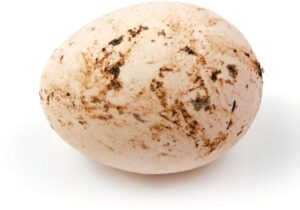 |
· Insufficient nest space
· Birds are not using nest boxes · Aggressive behavior; birds fighting for nest space due to inappropriate stocking density |
· Allow 4 birds per nest or 40 birds per linear meter (12 birds per linear foot) of nest space
· Ensure that there are no barriers to the nests, such as feeder or drinker lines · Uniform light distribution of 60 lux (6 foot candles) or more · Walk the house frequently (6-12 times per day) to collect floor eggs; frequency can be reduced after peak |
| Blood on shell
|
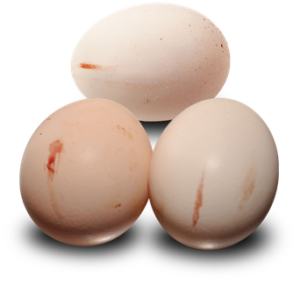 |
· Birds display signs of prolapse or damage to the cloaca due to sexual immaturity or over- stimulation
· Aggressive behavior · Birds are laying first eggs too early |
· Use recommended lighting and feeding programs
· Use recommended stocking densities · Ensure proper feeder space Male to female ratio – too many · Males may cause over-mating and damage to the females |
| Small eggs | 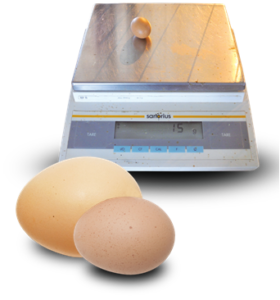 |
· Moving birds too early to open sided houses
· Lighting too early · Poor flock uniformity · uneven egg size due to poor feed distribution |
· Delay transfer or use blackout or brownout curtains
· Birds should not be transferred before 18 weeks · Delay light stimulation until birds are sexually mature · Ensure that feed is distributed evenly throughout the house and that there is sufficient feeder space |
| Faecal contamination | 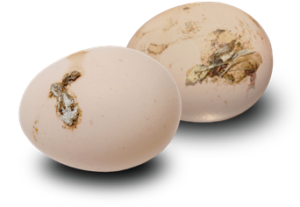 |
· Nests are not clean
· Infrequent egg collection · Automatic egg collection systems are contaminated with fecal material · Water sodium level is not correct · High dietary fiber content in the feed |
· Ensure the nesting material is changed or topped up on a regular basis – at least every 10 days
· Nest mats should be cleaned regularly – typically every 6 weeks · Collect eggs at least 4 times a day · Clean or sanitize egg collection belt regularly – at least weekly · Monitor feed samples for contaminants (e.g. Sulphur drugs and mycotoxins) · Monitor water quality to maintain a level of 50-300 ppm depending on the chloride level · Monitor the amount and type of fiber used in the feed |
| Cracked or punctured eggs | 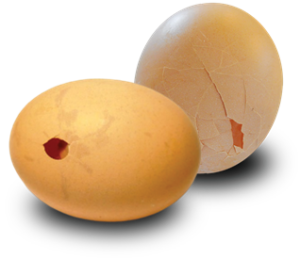 |
· Automatic egg collection/ packing system is causing cracks
· Rough handling after egg collection · More no of birds per next box |
· Check for rough transfer points within the automatic collection/ packing system
· Allow 4 birds per nest or 40 birds per linear meter (12 birds per linear foot) of nest space · Be gentle when transporting eggs on the farm |
| Abnormal shaped or wrinkled eggs | 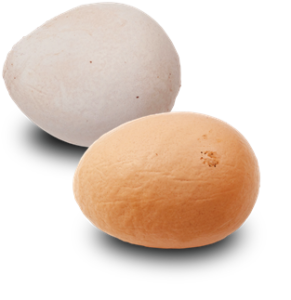 |
· Disease
· Incorrect vaccination program for the area · Good biosecurity is not being practiced |
· Check for diseases such as Newcastle Disease (ND), Infectious Bronchitis (IB) and Egg Drop Syndrome (EDS)
· Ensure the proper vaccination program · Good biosecurity practices such as implementing foot baths, wearing clean or disposable coveralls, being aware of visiting houses with older birds and then visiting younger birds, washing hands and complying with shower policies |
| Thin shell or shell less eggs | 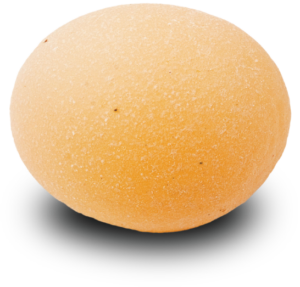 |
· Feed nutrient levels are incorrect
· Possibility of disease · |
· Take feed samples and analyze for levels of calcium, Phosphorus, and Vitamin D
· Check for diseases such as Mycoplasma, ND, AI (AVIAN INFLUENZA), EDS, and IB · Ensure correct lighting and feeding programs are being used |
| Double yolk egg | 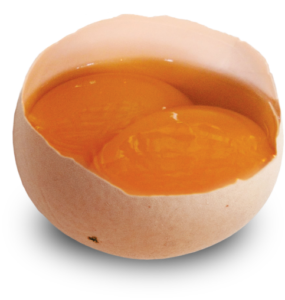 |
· Lighting program inside the laying house is not appropriate
· Light stimulation has occurred too early · Overfeeding into peak |
· Use recommended lighting and feeding programs
· Delay transfer · Delay light stimulation until birds are sexually mature · Follow the recommended feeding program |
| Calcium deposits on eggs
|
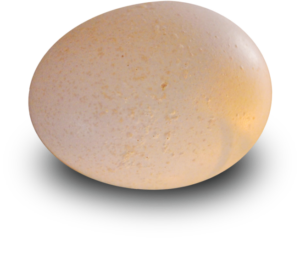 |
· Calcium levels in the diet are too high
· Possible influence of disease · Defective shell gland |
· Check calcium levels in the diet and ensure that recommendations are followed
· Check flock for signs of IB |
| Body checked and Slab Sided Eggs | 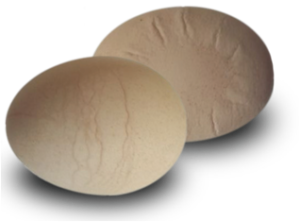 |
· Older age flocks
· Improper lighting program being used · Incorrect stocking density · Possible influence of disease |
· Keep the flock age as low as economically possible
· There should be no sudden increases in day length when birds are coming into lay · Overcrowding may cause undue stress and aggression · Use a recommended vaccination program and monitor the flock for IB |


